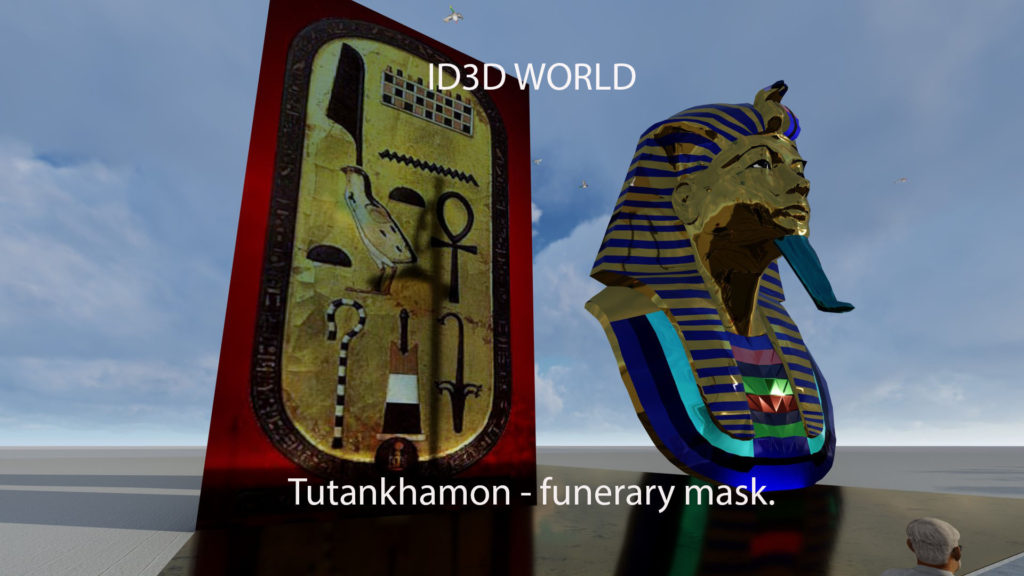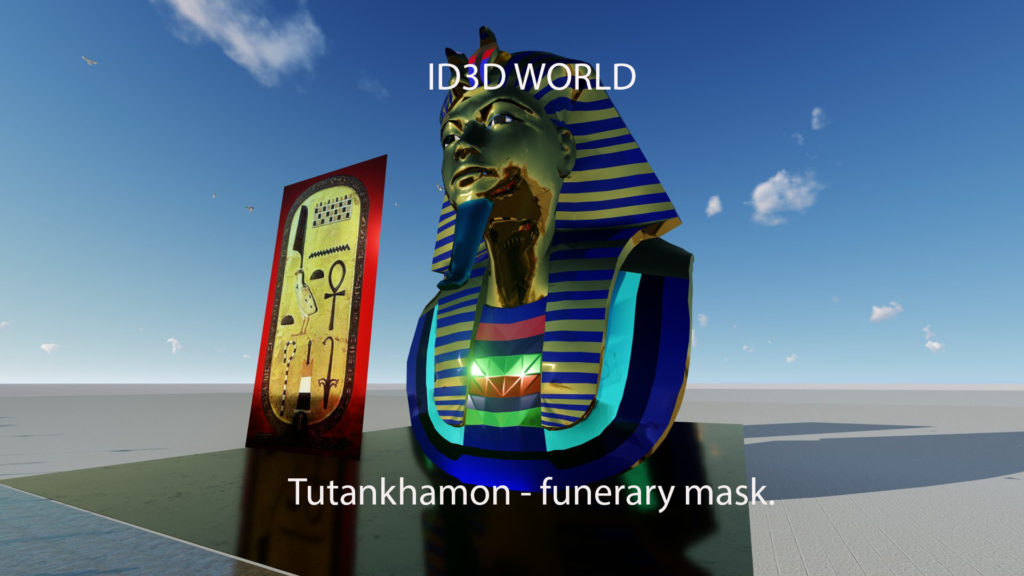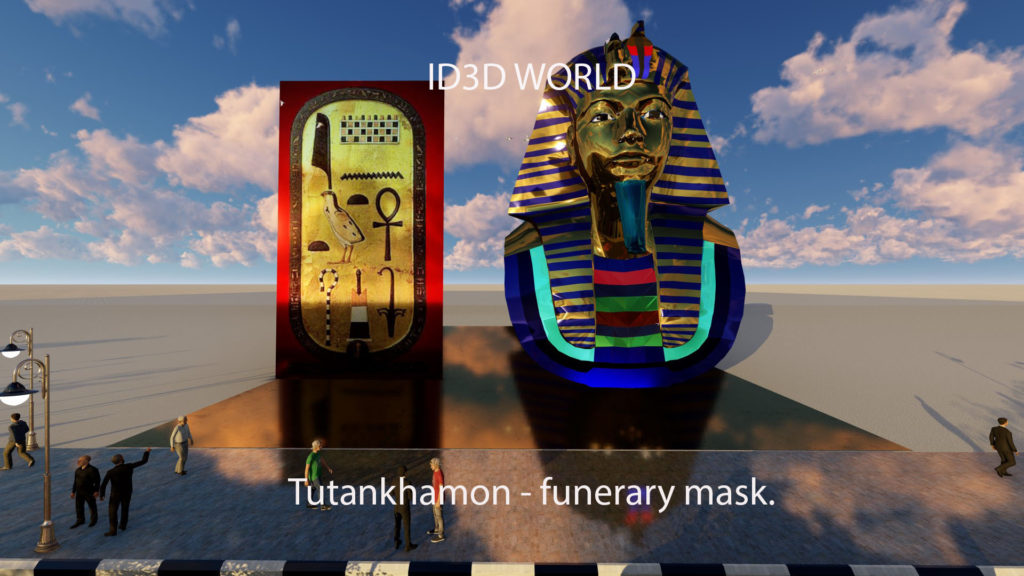7 . Tutankhamon – funerary mask.
Animation Visualization Rendering BY ID3D WORLD
Tutankhamun (alternately spelled with Tutenkh-, -amen, -amon), (1341 BC – 1323 BC) was an Egyptian Pharaoh of the Eighteenth dynasty (ruled 1333 BC – 1324 BC in the conventional chronology), during the period of Egyptian history known as the New Kingdom. Try 5 dragons real money slot from us! His original name, Tutankhaten, means “Living Image of Aten”, while Tutankhamun means “Living Image of Amun”. Often the name Tutankhamun was written Amen-tut-ankh, meaning “living image of Amun”, due to scribal custom which most often placed the divine name at the beginning of the phrase in order to honor the divine being. Tutankhamun was only eight or nine years old when he became pharaoh, and reigned for approximately ten years.




The death mask (above) is considered one of the masterpieces of Egyptian art. It originally rested directly on the shoulders of the mummy inside the innermost gold coffin. It is constructed of two sheets of gold that were hammered together and weighs 22.5 pounds (10.23 kg). Tutankhamen is depicted wearing the striped nemes headdress (the striped head-cloth typically worn by pharaohs in ancient Egypt) with the goddesses Nekhbet and Wadjet depicted again protecting his brow. He also wears a false beard that further connects him to the image of a god as with the inner coffin. He wears a broad collar, which ends in terminals shaped as falcon heads. The back of the mask is covered with Spell 151b from the Book of the Dead, which the Egyptians used as a road map for the afterlife. This particular spell protects the various limbs of Tutankhamun as he moves into the underworld.
Animation Visualization Rendering BY ID3D WORLD